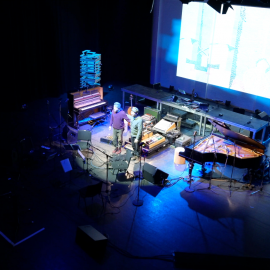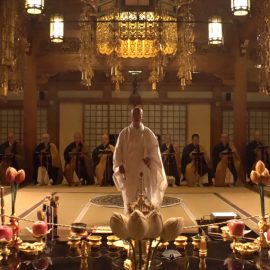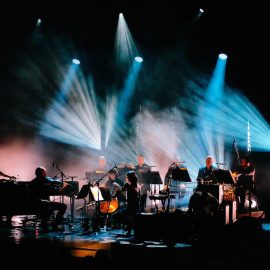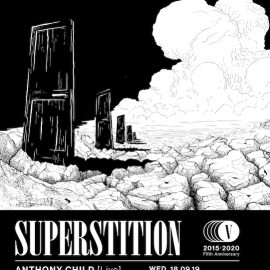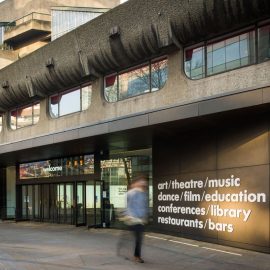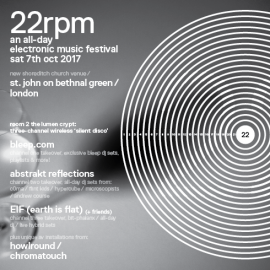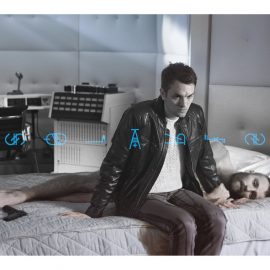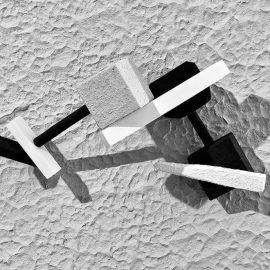… the sound of a piano being pushed through a wall…
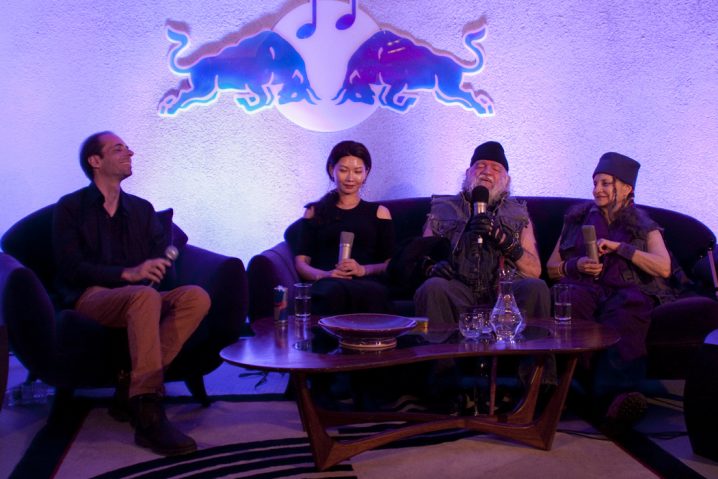
On an ordinary Wednesday evening, I found myself standing on line in front of a typical New York nondescript building, awaiting an incredibly rare opportunity to meet La Monte Young, presented by the month-long annual Red Bull Music Academy Festival, for what turned out to be a two-plus hour conversation on his musical life, philosophy on harmonics, and history of the Dream House. “You wouldn’t happen to be a journalist,” I heard a deep rasping voice tugging at the back of my shirt in line. “Well, kinda,” I said, “and you?” An old man looked at me through his tired eyes and said, “Oh, I am Henry Flynt.” And so began my not-so-ordinary Wednesday evening, during which this 79-year-old composer opened up a whole new world of sound…
Moderated by Alan Licht, accompanied by his disciple, Jung Hee Choi, and his lifetime partner in crime, Marian Zazeela, La Monte revived his memories on growing up in Idaho, living in Los Angeles, studying at UCLA (under Karlheinz Stockhausen), and finally moving to New York in the 60s, where he curated many concerts at Yoko Ono‘s loft, often introducing some of the then-contemporary avant-garde musicians. At this time, Young began developing some of his philosophical ideas on the nature of music, its limitations and its extremities. One piece instructed the performer to build a fire and hear it burn, another releasing a butterfly into the room, or pushing a piano through a wall, and holding a perfect fifth “for a very long time“.

The latter slowly evolved into a study of selected pitches, intervals and frequency ratios, played continuously to enable a somewhat transformative and meditative state of being, discovered during the natural fractions of numbers, that the brain can make some sense of. This is where the Dream House began to take shape in his mind, a light and sound installation where individual frequencies emanate continuously, 24-hours a day, from different points of the dwelling, and so, no matter where you stand, you always hear it in a completely new and distinct way. “Imagine children being born in this house,” Young proposed, “this is all that they would ever know…” Pushing the boundaries of time even further, Young and Zazeela conceived of works that had “no beginning and no end“, practicing extended sleep-waking schedule, with days longer than 24-hours.
The very first sound that I recall hearing was the sound of wind blowing under the eaves and around the log extensions at the corners of the log cabin
In the 70s, Young became interested in Asian classical music, pursuing studies with Pandit Pran Nath, who taught him musicological ideology of a slow-tempo raga, with emphasis on long and sustained pitches, often accompanied by a tanpura (tambura), an Indian string instrument which can sustain the melody by providing a continuous harmonic drone. This later study, along with Young’s fascination with sine waves, is what eventually led him to explore and finally develop a sustained branch of musical minimalism, to which today we refer to as drone…
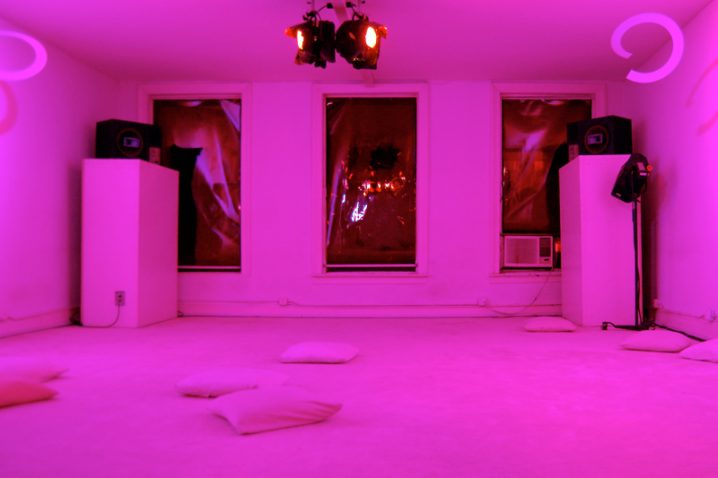
Needless to say, that after such an evening in the company of a the first minimalist composer, who has been called “the daddy of us all” by Brian Eno himself, I felt a sense of elation, inspiration, and encouragement to study music and sound itself, with full dedication of one own life towards such goal. I’d like to thank Red Bull Music Academy Festival and Motormouthmedia for an invitation and such a rare delight. Now, I’m off to my first visit to the Dream House!
